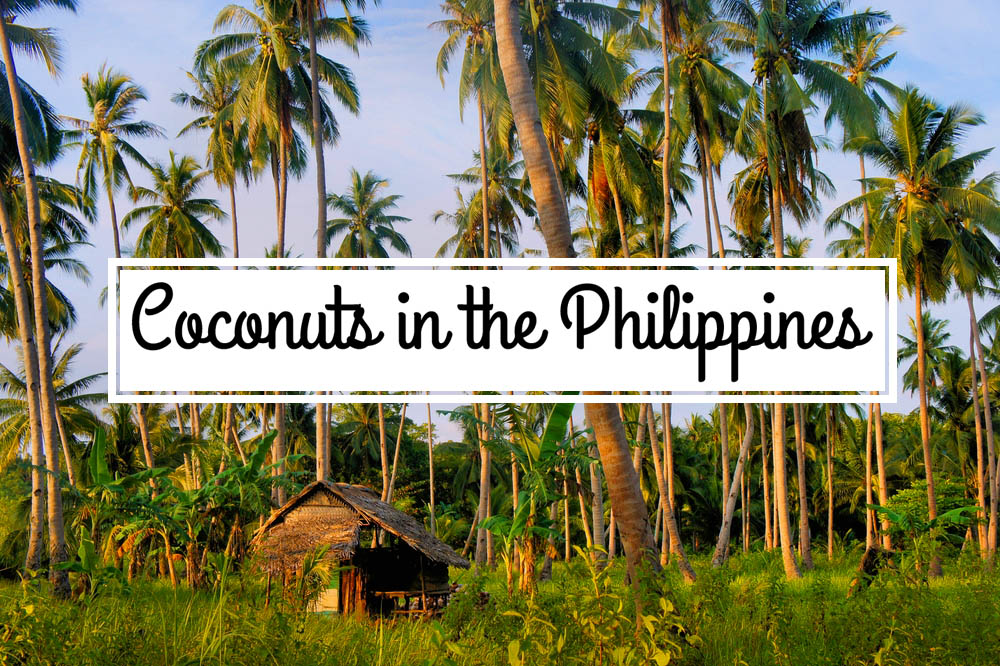It’s unusual to say this but until a few months ago, I had never eaten a coconut before.
Actually, more specifically, I had never eaten a fresh coconut before.
During my time in Australia, I had enjoyed the old dried out, or “mature” coconuts exported from countries like the Philippines. I quickly found out it is nowhere near the same as a coconut fresh from the tree.
Unsurprisingly coconuts are one of the Philippines biggest exports. You can literally find them everywhere, the first time I had one was from a man selling them on a beach in Palawan. It was hard to turn down an offer of two whole coconuts for just P50.
Once I tried it, I was hooked. It was hard to believe that something that tasty was found on palms all across the country.
It became clear to me that the coconut is deeply ingrained in the Philippines culture. Many go as far as referring to it as the “tree of life”. It has satisfied the daily needs of countless Filipinos. It’s often used as a source of food, oil, dyes as well as being used to construct homes, furniture and other small household items.
Harvesting the versatile coconut
When travelling the country I noticed that a lot of the coconut palms have little wedges cut out all the way up their trunks. This aids in helping those harvesting coconuts once they are ready.
Within what seems like seconds a person can climb to the canopy of a palm with a bolo knife (large traditional knife in the Philippines) They will then cut down the fruit of the palm which is ready for consumption.
Many medium scales farms are found across the country. These are run by some of the poorest members of the Philippine society, who will hire local – usually underpaid – labour to assist in their production efforts.
Farming coconuts is not an easy life. Despite the consistent annual growth, farmers still battle to get by.
In 2013 the country was struck by the devastating typhoon Yolanda. About 44 million palms were wiped out or damaged during the typhoon. This would impact the livelihoods of over 1 millions farmers, some who had a debt owing on their farm which they still needed to find a means to pay.
Out of the devastation came many lessons for farmers. Many have now moved onto tapping into alternative sources of income. Many farmers now grow smaller short-term cash crops like corn and other vegetables to better utilise the land around the coconut palms.
International coconut addiction: The Philippines fight to meet demand
At one point in time, the international coconut market was dominated by South American countries like Brazil. The global dominant source has now shifted to Asia. 90% of the world’s coconuts are now sourced from Asia, with many countries reliant on those exports as a vital source of income.
Vanuatu’s national income is highly reliant on the coconut industry with 50% of it coming from the export of coconuts. Whereas the Philippines export of mostly desiccated coconut products makes up 1.5% of its national income. This is still a significant figure considering the Philippines exports more than $1 billion worth of coconuts to the United States alone.
Another point to consider is demand for coconut products has only been going up. In the last decade, international demand has grown a staggering 500%. This is due to the boom in coconut based products such as soaps, health products and coconut water.
The Philippines has been looking to the international community for help as it is struggling to keep up with the massive demand. They have been searching for methods to both streamline production as well as curtail some of the demand. This demand for efficiency will have a flow-on effect in providing an example for other countries in the region to follow.
Cocofest: Celebrating the Philippines tree of life
The coconut has really earnt its reputation as being a miracle plant.
The water and oil have a myriad of different benefits for your health. As well as the plant itself being a great source of building supplies. This is why the people of San Pablo City begun celebrating Cocofest each year. This is a show of appreciation for the crop that sustains so many peoples lives within the Philippines.
The Philippines still remains one of the top producers in the world. With many Filipinos remaining determined to help maintain that position. There is still a lot of research being undertaken to help the Philippines reach its full potential in regards to coconut production.
This will ensure the industry continues to flourish, as well as local communities beginning to see some economic relief as a result of their hard work. This research also helps the Philippines to continually export high-quality coconut products to the international market.
